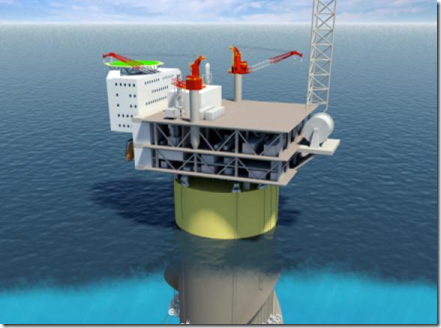Blog Archives
First Subsea Invests in Test Rig for Mooring Connectors (UK)
Subsea mooring connector (SMC) specialist, First Subsea has invested over £200,000 in new mooring connector test rig facilities at its production site in Lancaster, UK.
The test-rig is being used in the manufacture of ‘next generation’ SMCs for industry leading, deepwater mooring projects: the Jack & St Malo field’s semi-submersible platform and Lucius field’s Spar moorings, both in the Gulf of Mexico.
The SMC test rig is used for proof load and Minimum Breaking Load (MBL) testing up to 2,600mT (25,497 kN).
‘Next Generation’ Mooring Connectors
First Subsea leads the world in research into large scale steel forgings. In collaboration with the University of Sheffield’s Institute for Microstructural and Mechanical Process Engineering (IMMPETUS), the company has systematically improved the performance of its mooring connectors. The metals forging research is now being applied to the manufacture of the company’s latest Ballgrab Series III male connectors – the largest produced so far with an un-corroded 2,599mT (25,491kN) MBL, and compliant with the ABS Mooring Guide 2009.
“This is a significant investment that will ensure our Ballgrab subsea mooring connector continues to set the standard for deepwater moorings,” says John Shaw, managing director, First Subsea Ltd.
First Subsea Invests in Test Rig for Mooring Connectors (UK)| Offshore Energy Today.
Aker Solutions to Design World’s Largest Spar Platform for Statoil
Aker Solutions has been awarded a FEED (front-end engineering and design) contract from Statoil to design the world’s largest Spar platform for the Aasta Hansteen field development in the Norwegian Sea.
With a total hull length of 193 meters and a draught of 170 meters, the Aasta Hansteen (formerly named Luva) Spar platform will be the largest of its kind. A Spar platform is a cylinder shaped floating offshore installation. Aasta Hansteen will be the first Spar platform on the Norwegian continental shelf (NCS), and also the world’s first Spar platform with condensate storage capacity – a so called Belly-Spar.
The Belly-Spar concept is an exclusive Aker Solutions design. The ‘belly’ refers to the increased diameter on part of the circular shaped hull, where the condensate storage tanks are located. This gives the Aker Solutions’ Belly-Spar its characteristic shape.
Henning Østvig, head of Front-End & Technology in Aker Solutions says: “The Aasta Hansteen Spar will be the first production platform on the NCS with steel catenary risers. With a water depth of 1300 meters, this is probably the only riser technology that can meet the challenges on the Aasta Hansteen field”.
The steel catenary risers are made of self-supporting steel pipes in a bow shape between the platform and the seabed. The shape helps the risers compensate for the motions on the floating facility.
Innovation
“The Belly-Spar concept is a result of the innovative spirit and culture among our engineers, who have come up with the right solutions for the challenging conditions on the Aasta Hansteen field,” says Valborg Lundegaard, head of Engineering business area in Aker Solutions.
The mooring system for Aasta Hansteen Spar platform consists of a set of polyester lines. “There are currently no installations on the NCS with polyester mooring. Aasta Hansteen may be the first, and it will definitely be operating in the deepest water,” says Henning Østvig.
The FEED study will be completed in the third quarter of 2012. The contract value is undisclosed.
Aasta Hansteen
The field was discovered in 1997 and lies 300km offshore in the Vøring area. The licence partners are Statoil (75 per cent), ExxonMobil (15 per cent) and ConocoPhillips (10 per cent).
Aker Solutions’ contract party is Aker Engineering & Technology AS.
Related articles
- USA: Aker Solutions to Provide Umbilicals for Anadarko’s Lucius Development (mb50.wordpress.com)
- Aker Solutions wins NOK 1 Billion Contract to Upgrade Snorre A Drilling Facilities (gcaptain.com)
- USA: Aker Solutions to Open Hi-Tech Drilling Equipment Simulator in – Houston (mb50.wordpress.com)
- Norway: Aker Solutions Delivers Subsea Templates for Skuld Fast-Track Development (mb50.wordpress.com)
- Aker Solutions to Deliver 6 More Trees to Statoil’s Giant Troll (gcaptain.com)
- Ghana: Aker Solutions Signs Well Service Contract with Tullow (mb50.wordpress.com)
- Norway: EMAS AMC Wins Fram SURF Deal from Statoil (mb50.wordpress.com)







 Continents of the World
Continents of the World